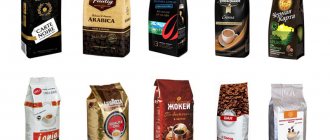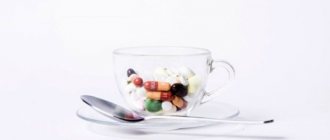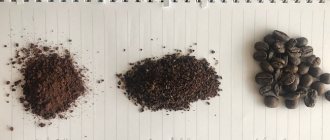Introduction
We are surrounded by a diverse palette of tastes. The taste is complemented by aroma and becomes more attractive; it can be so complex that it seems as if the receptors on the tongue are exploding from the sensations. What words do you usually use to describe? People often use four basic adjectives: sweet, bitter, sour, salty. But how can we describe something whose taste is multifaceted, such as coffee, which has many flavoring and aromatic components?
In this article we will discuss how to understand and describe the diverse taste of coffee, and explain the complex in an accessible way.
In the coffee industry, there are people who evaluate the quality of beans and determine the characteristics of coffee, they are called Q-graders. To evaluate, experts conduct cupping (tasting coffee to describe the taste). The aroma of the ground grain is assessed, then the aroma and taste characteristics of the finished drink. In order to communicate in one language, they created the “Wheel of Flavors”, which indicates the main shades of taste and aroma that are familiar to most people.
Using the wheel is simple, you just need to move from the inner wheel to the outer one, choosing the appropriate shades that are close to those that you felt in the drink.
Thanks to this system, professionals can easily understand each other.
In order to fully characterize a cup, it is not enough to describe only the taste and aroma; there are also other criteria: acidity, sweetness, bitterness, body, bouquet and aftertaste, which we will talk about later.
How to describe the taste of coffee with your senses
A very useful thing for those who cannot express their feelings in words! For example, you can charm someone with your ability to beautifully describe the range of taste and aroma of coffee. We know the cases!
Lifeless. Coffee lacking taste and aroma. Wine. Taste and aroma sensation, reminiscent of the taste and aroma of good red wine. Inherent in highly fermented grains. Watery. A drink brewed either with insufficient ground coffee or with insufficiently hot water. Weathered. Coffee with a weak taste, aroma and aftertaste. Bitter. A taste sensation resembling that which occurs in the mouth after taking quinine. Often caused by roasting beans too much. Filthy. Unpleasant taste and aroma of low-quality coffee. Wild. The taste sensation caused by grains collected from wild trees. Hard. Taste sensation resembling burning. Contaminated. Taste sensation of rancidity. Smoky. A taste sensation caused by over-roasting coffee beans. Moldy, musty. The taste sensation inherent in old grains that have been stored for a long time or incorrectly. Earthy. A taste sensation reminiscent of the taste of earth. Much like a polluted taste. Spoiled. Taste and aromatic sensations colored by the presence of chemical residues (pesticides, etc.). Caramel. A taste sensation strongly reminiscent of burnt sugar. Sour. Pungent taste sensation caused by excess acid. Characteristic of unripe grains. Medical (iodide). Rare aromatic sensation reminiscent of hospital smell (iodine). Inherent in one of the varieties of Brazilian coffee. Soft. A taste sensation devoid of any pungency. Neutral. A taste sensation that lacks any distinct flavor. Walnut. Taste sensation reminiscent of burnt nuts. Spicy. A taste sensation reminiscent of spices. Nice. Coffee with a full and delicate taste, without astringency. Rubbery. An aroma sometimes associated with Robusta coffee. Reminds me of the smell of burning rubber. Turpentine. Taste and aroma sensation reminiscent of turpentine. Sweet. A taste sensation completely devoid of astringency. Tart. Harsh and acrid taste sensation. Thin. Coffee with slight acidity. Grassy. A taste sensation reminiscent of the aroma and taste of green grass. Fruit. A taste sensation reminiscent of the taste and aroma of citrus fruits and berries. Carbonic. A taste sensation reminiscent of charcoal. Refined. Pleasant and delicate taste sensation. Chocolate. Taste sensation reminiscent of dark chocolate and vanilla.
0 0 vote
Rating
Acidity
Positive acidity is pleasant to the taste, is highly valued in a drink, and emphasizes its quality. Acidity is assessed after the temperature of the drink has dropped to 60-70°C. When describing acidity, its intensity is determined: low, medium, high, as well as its taste characteristics.
Characteristics of positive acidity:
- Lime;
- Berry;
- Bright juicy;
- Delicate;
- Wine;
- Orange;
- Saturated.
Negative acidity, which is unpleasant to the taste, indicates a low-quality bean or that the coffee is under-extracted (undercooked), such a drink will be unpleasant to drink.
Characteristics of negative acidity:
- Herbaceous;
- Sour;
- Sharp;
- Musty;
- Vinegar;
- Empty.
Color and coffee. How color influences choice
Contents show
How color affects our perception
For whom?
This article was written mainly for coffee shop owners, designers and people who work in the coffee industry, but I also recommend reading it even if you don’t drink coffee at all, since the topic is quite relevant for other areas.
Color, from a physical point of view, is a feature of the eye’s perception of different waves of light. Each wave corresponds to a spectrum, which in turn is a carrier of information.
In fact, color carries psychophysiological information that is perceived by a person on a subconscious level. A striking example is the use of color in road signs: yellow as a warning color, red as a danger and prohibition color.
Each nationality and age group perceives color differently and can have different emotional meanings. As an example: in Europe, white is the color of purity, celebration, and also acts as a neutral color. But in India, China and Japan it is the color of mourning, death and misfortune. This is a typical example of the influence of different mentalities on color sensitivity. Also, children and adults, people of different psychotypes (hedonists, aesthetes, negativists) and even people of different social groups will perceive colors differently.
The difference is especially noticeable in age groups; children react more actively to bright and varied colors than adults and do not sort colors according to the psychology of their impact. This can be explained by the fact that they simply do not know what emotional connotation this or that color carries.
What attracts a child to brightly colored cereal? Most likely, it’s not about specific colors, but about their diversity. Nutritionists from Cornell University showed children and adults photographs of dishes and asked them to choose the most appetizing ones. Adults liked classic dishes of three colors (meat, side dish, salad, for example). Children were attracted to dishes that contained as many flowers as possible. Almost all of them chose dishes with six colors - there were simply no more in the photographs. Children do not understand what this or that color means, but they feel the very fact that food is colored very keenly.
Color is a powerful tool for controlling human feelings; it allows you to push a person to certain emotions that can influence his choice. In our case, with the help of color we can help a person understand the taste profiles of a particular coffee.
The Wheel of Flavors is a striking example of successful visualization of flavors through different colors. Each taste has its own color shade, which helps you quickly understand the taste you are trying (for example, during cupping) and the colors serve as the fastest navigation through the taste circle. If you smell something plant-based, look for the green color; this quickly narrows down the search area for the flavor you need.
Each category of tastes has its own color, not only in the wheel, but also in people’s heads - this is called an association. What color do you associate chocolate with? That's right, with brown. Lemon is yellow. Interesting fact: the image of a lemon, on a subconscious level, causes a person to salivate; the same effect, but slightly less pronounced, causes a bright yellow color. This is already called a conditioned reflex. There are two types of reflexes: “conditioned” and “unconditioned”. In simple terms: when lemon juice hits your tongue, this is an unconditioned reflex; saliva can also be released at the sight of a lemon, as well as when you hear the word “lemon” - this is a conditioned reflex. The difference is that an unconditioned reflex is a process that occurs in the body at a physiological level, i.e. innate, and conditioned - this is a psychophysiological reaction of the body, in this case the sight of lemon (or the sound of this word) does not always cause salivation and may not work for some people (for example, for those who have never tried lemon in their life or who have problems with the perception of similar tastes), all these processes were described by I.P. Pavlov in his scientific works.
All these tools should be used when designing visual communications in a coffee shop, identity and coffee packaging. Color is an important component when developing a corporate identity and visual communication; 86% of information is perceived visually by a person; this tool can and should be used when you are building a visual style in a coffee shop or packaging. Unfortunately, in practice, this tool is practically not used by our coffee shops and roasters, preferring minimalism and craft paper in their packaging. To be convincing, let’s look at a few examples of the largest specialty coffee roasters in Russia and their packaging.
From these examples we see that 4 out of 9 packages try to achieve maximum minimalism, the packaging from Coffee Owl stands out due to its bright color scheme, Sweet Beans, Calypso and Perfectionist overexpose the visual design using graphic elements on a white background. But out of all the examples, it is impossible to single out a single package that uses color as a clear informative component in the visual complex; they play more of a decorative or contrasting element. Whether these packages fall within the real target audience is a question that I am not competent to answer, and the purpose of this article is only to analyze trends and give an understanding of whether design in the coffee industry is moving in the right direction.
Based on what we found out, several conclusions can be drawn. Firstly, color as a carrier of information is not yet widespread; this tool is quite easy to use and can produce impressive results when used correctly.
It is worth considering the psychotype of your target audience and the needs of these psychological groups. You should not make an aesthetic and minimalist design like, for example, Coffee Collective, if your coffee shop is located in a shopping center and is designed for a flow of people, these are two different coffee spheres and two different approaches to communication with guests and customers.
Hire professionals. Branding and corporate identity are those things on which it is better not to skimp; good branding and its proper subsequent development can create the desired and accurate image in the consumer’s mind and fully convey your values and business mission. Bad branding can easily ruin your attempts to create a recognizable and attractive image; the most common mistake in poor-quality development of a brand complex or corporate identity is incorrect positioning and inaccurate definition of the target audience of the business, which subsequently greatly complicates further work with your real target audience .
I hope you can get the maximum benefit for yourself after reading this article. Good luck and thanks for watching.
Sweetness
Sweetness is an important characteristic of the taste of a drink. Sweetness is a positive factor, it comes in different intensities, characterizes the drink from the best side and speaks about its quality. The longer the beans are roasted, the more caramel compounds appear (sugars burn in over-roasted coffee, which contributes to the appearance of pronounced bitterness in the drink).
Sweetness characteristics:
- Fruity;
- Floral;
- Honey;
- Chocolate;
- Caramel.
Bitterness
A pleasant bitterness is characteristic of some Arabica beans (Uganda, Indonesia), and it also appears as a result of long roasting and over-extraction (when coffee is digested through high temperature or long brewing time).
Positive characteristics:
- Dark chocolate;
- Burnt caramel;
- Grapefruit pulp;
- Pit.
Negative characteristics:
- Tablet;
- Herbaceous;
- Peat;
- Ashy.
Body
It is assessed like acidity at a temperature of 60-70'C; this temperature is important, because a higher one will interfere with determining the density and quality of the body. When describing the body of a drink, they focus on the weight of the drink and quality (tactile sensations).
Positive characteristics:
- Enveloping;
- Dense;
- Velvety;
- Drinking;
- Juicy.
Negative characteristics:
- Empty;
- Dusty;
- Dry;
- Astringent;
- Tart.
There are other rules for selecting names:
- The name should leave no doubt that you can drink a cup of aromatic coffee here. With the word denoting a popular drink, you can find interesting options: “Thank you coffee”, “Coffee maker”, “Coffee of the world”, “Who wants coffee?”, “Coffee”, “Coffee philosophy”.
- Names that evoke associations with coffee and food are attractive: “Cupcake”, “Croissant”, “Cheerful Day”, “Sweet Tooth”, “Chocolate Girl”.
- The name does not necessarily have to be related to the activities of the establishment. These can be words or a group of words that evoke pleasant associations or sound beautiful: “Expression”, “Tulip”, “Mango”, “It’s mine”, “Chamber of Secrets”, “Maestro”.
- Names using foreign vocabulary will attract lovers of everything foreign. English is most often used: Coffee Lunch Market, Impress, Coffeeshop Company, Forget Me Not. But you can see signs in French: ÔPETIT (Oh God), Macaron (a type of cookie), La vie en rose (Life in Rose); German: Mary's Bagels, Waffel; Danish: Hygge (comfort), Italian: Est! Caffe, Presto Coffee. In most cases, foreign names, like Russian ones, contain the word “coffee”, sometimes the name of the variety, famous brands, names: Magic Coffee, Latte Art, Luigi, Maya, Musetti, Hogan. However, there are many that do not have a translation, for example: Sicaffe, D'oro, Chocorus.
- Sometimes combined vocabulary is used (Sicaffe. Coffee and strudels, ND.Pro.Flowers, New Brig, “Coffee House”) and the Latin alphabet to write Russian words: Umka, Zerno, Zapravka Coffee. It is important here not to go beyond what is reasonable. For example, the words LES and MED (forest and honey) will only cause confusion.
The name can be as simple as “Coffee shop.” The main thing is that the coffee is hot, aromatic, and has excellent taste.
Balance
A balanced drink is one whose taste and tactile characteristics do not dominate over others, but complement each other. The taste of this drink is complex and unforgettable.
Positive characteristics:
- Balanced;
- Juicy;
- Difficult;
- Drinking;
- Bright.
Negative characteristics:
- Unbalanced;
- Dim;
- Empty;
- Flat;
- Watery;
- Simple.











